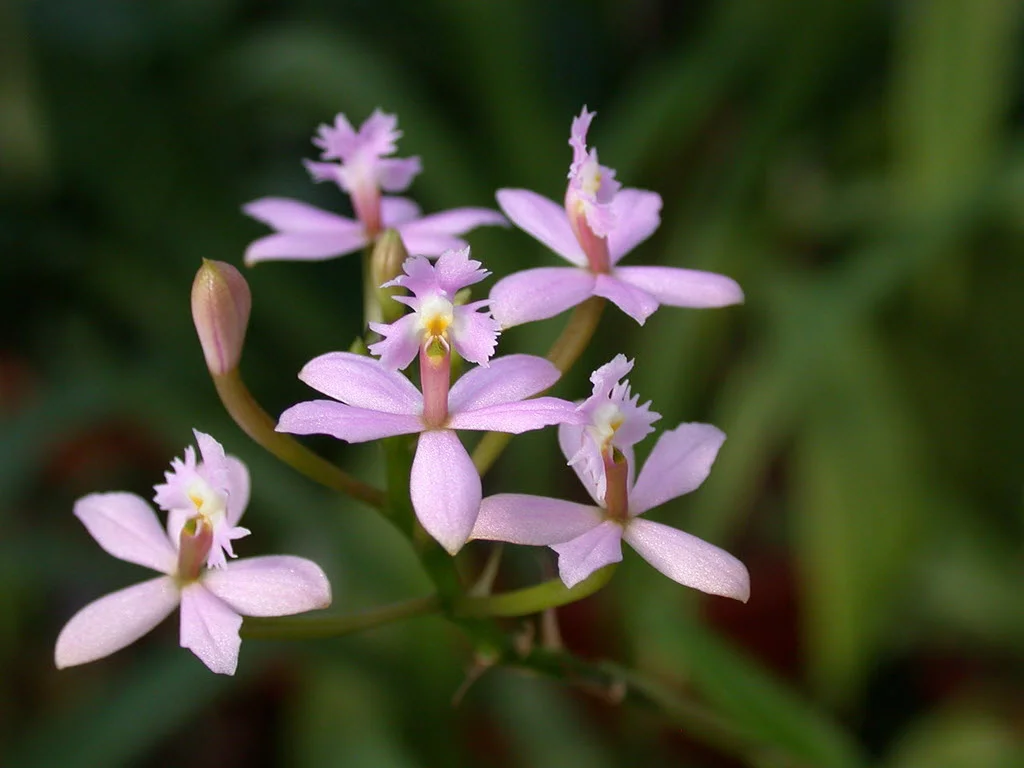Table of Contents
Pronunciation: bleh-TILL-uh
Other Names: Urn Orchid or Chinese Ground Orchid
Introduction:
Bletillas have been used for decades by Chinese herbalists to treat a wide range of conditions, and it's prized for its medicinal properties. Commonly, the herbalists use it to treat gastric ulcers, swelling, fever, cough and cracked skin on feet and hands. The flower is dried and added to teas or warm drinks.
bletilla striata
This genus is small, with only six species, but it is prized by landscapers for being a very hardy orchid. In particular, this orchid is excellent for beginners.
It was first mentioned in 1853, and it is native to Taiwan, Japan, and China. This orchid has bright, showy flowers in white and purple, and each pseudobulb has several leaves that are pleated and grow to around 40 centimeters long (15.7 inches).
Temperature
As this is a very hardy orchid, it can easily survive outdoors in temperatures ranging from 90°F to 40°F (23° to 4°C). Also, they have been known to survive winter temperatures down to -10°F (-23°C). However, if you want to be safe, you should bring them inside if the temperature dips below 40°F (4°C) or goes higher than 90°F (23°C).
For ideal daytime temperatures, these orchids prefer cooler, fall-like temperatures that range from 55°F to 65°F (12°C to 18°C). Nighttime temperatures can dip to around 50°F (10°C) without an issue.
Light
Bletillas like indirect but bright sunlight. If you plant them in an area that has direct sunlight, consider breaking it up with some cover. For indoor plants, set them back slightly from the windows so they get light, but not enough to burn the leaves.
If your orchid gets too much direct sun, you will notice a yellowing or brown tint to the leaves. If it continues, the leaves will die, and your orchid might not survive.
Water and Humidity
In April, you'll start to notice new shoots, and you can start watering your Bletillas once a day. You can continue this as your plant goes through its growth phase in June and July and on until October.
Once October comes around, your plant will start losing its leaves in preparation for its dormant winter stage. When they're dormant, they only need sparse water to keep them slightly moist. You want to avoid soaking them or having the roots standing in water at this time, and you can resume you heavier watering when you see new shoots in the spring. They like humidity levels between 40% and 60% year-round.
Feeding
As this orchid is easy to care for, you should feed it once a month with a 1-1-1 fertilizer ratio mix. Use potassium-rich fertilizer, and this is especially important in the growth phases from April through July to encourage strong growth and bright blooms. This also ensures that your Bletilla orchid will come back strong in the spring.
Potting
These orchids do very well outdoors, but they thrive in pots as well. You want to have very loose, aerated soil that allows for rapid water drainage. If you're using a pot, mix two parts peat with one part sand. You can also add up to 20% lava stone (Vulca) to encourage drainage.
Your pots should have a minimum diameter of 30cm to 40cm (approx 12-16") to encourage growth. You should repot your plant every two to three years to refresh their compost medium, and the spring is the best time to do this when you see new shoots forming.
Video
Botanyboy talks about just how easy it is to cultivate Bletilla orchids. He talks seeds, pests, unusual varieties, and offers a lot of care tips.
See more hardy yet gorgeous orchids from our comprehensive list of the different types of orchids.
More Orchid Types











